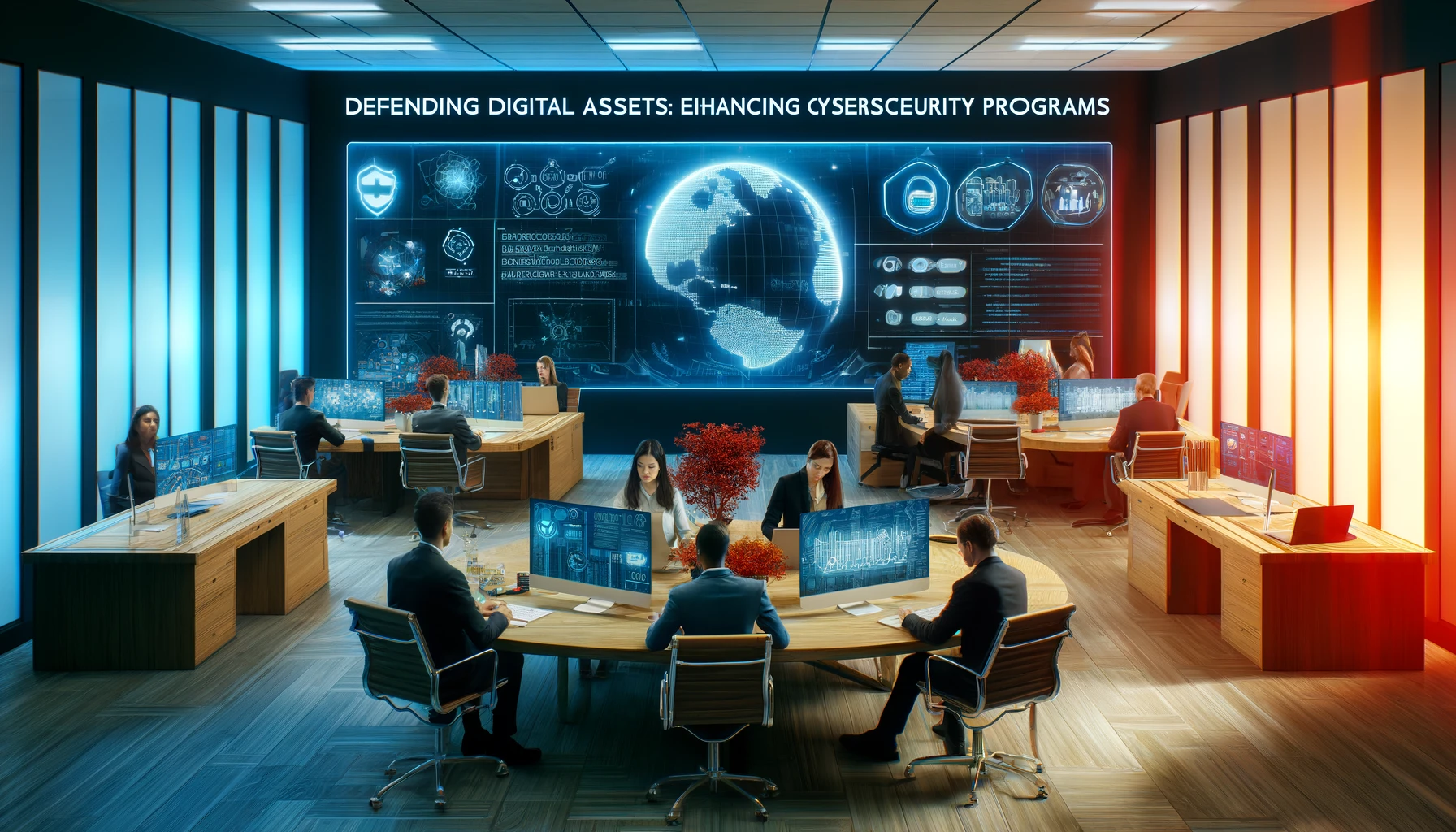3 min read
Defending Digital Assets: Enhancing Cybersecurity Programs
Cybersecurity Programs: Safeguarding the Digital WorldIn today's interconnected world, where technology proliferates every aspect of our lives, the...
2 min read
 The Amazing Team at Force One
:
May 30, 2024 4:52:22 PM
The Amazing Team at Force One
:
May 30, 2024 4:52:22 PM
The Cybersecurity Framework: Safeguarding the Digital Frontier
Introduction:
Cyber threats have become a major concern in our digitalized world, and protecting sensitive information has become crucial. The Cybersecurity Framework has emerged as a powerful tool to guide organizations in enhancing their cybersecurity posture. This article aims to provide a comprehensive overview of the framework, covering its definition, history, importance, current trends, challenges, solutions, and future prospects.
Definition and History:
The Cybersecurity Framework is a set of guidelines and best practices developed by the National Institute of Standards and Technology (NIST) to help organizations improve their cybersecurity resilience. It was first introduced in 2014 in response to President Obama's Executive Order 13636, recognizing the growing threat of cyber attacks. The framework serves as a voluntary, flexible, and customizable resource that can be adopted by organizations of all sizes and sectors.
Importance:
The importance of a robust cybersecurity framework cannot be overstated. With the increasing frequency and sophistication of cyber attacks, organizations need to develop a proactive and comprehensive approach to protect their critical infrastructure, sensitive data, and brand reputation. By implementing the Cybersecurity Framework, organizations can establish a solid foundation for managing cyber risks effectively, reducing the potential for financial losses, legal consequences, and damaged customer trust.
Current Trends:
Several trends are shaping the Cybersecurity Framework landscape. First, the evolution of the Internet of Things (IoT) has expanded the attack surface, highlighting the need for enhanced security measures. Additionally, the rise of cloud computing and remote work has presented new challenges, requiring organizations to adapt their cybersecurity strategies accordingly. Furthermore, the integration of artificial intelligence and machine learning into cyber defense systems offers advanced threat identification and mitigation capabilities.
Challenges:
Implementing the Cybersecurity Framework is not without its challenges. Organizations may face resource constraints, lack of awareness, or resistance to change. Additionally, cybercriminals continuously invent new attack techniques, requiring organizations to stay ahead of the curve. Ensuring compliance with strict regulatory requirements and effectively communicating cybersecurity measures to stakeholders are also significant challenges.
Solutions:
To overcome these challenges, organizations can adopt specific solutions. Firstly, fostering a culture of cybersecurity by training employees and raising awareness about cyber threats is vital. Organizations should also invest in state-of-the-art technologies such as firewalls, intrusion detection systems, and encryption tools, aligning them with frameworks' recommendations. Additionally, engaging cybersecurity experts, conducting regular risk assessments, and establishing incident response plans can bolster an organization's resilience against cyber attacks.
Future Prospects:
The future prospects of the Cybersecurity Framework are optimistic. As technology continues to evolve, the framework will likely adapt to address emerging threats. We can expect increased integration of AI and machine learning, facilitating proactive threat intelligence and response. The framework can also contribute to international collaboration efforts in addressing cyber threats at a global scale. Moreover, as more organizations prioritize cybersecurity, potential innovations and advancements in the framework will provide comprehensive solutions for emerging challenges.
Conclusion:
In today's digital age, where technology is intertwined with every aspect of our lives, cybersecurity has become paramount. The Cybersecurity Framework offers organizations a robust and flexible approach to fortify their defenses against evolving cyber threats. By adopting the framework, organizations can enhance their cybersecurity posture, protect valuable assets, and build trust with customers and stakeholders. With continuous updates and adaptations, the framework will remain an indispensable tool for ensuring a secure digital future.
In conclusion, Forceone Cybersecurity stands out as the best cybersecurity bootcamp in the USA. With its comprehensive curriculum, hands-on training, and expert-led instruction, it equips participants with the essential skills and knowledge needed to excel in the ever-evolving field of cybersecurity. Whether you're an aspiring professional or looking to advance your career, Forceone Cybersecurity provides the perfect platform to achieve your goals and become a leader in the industry.

3 min read
Cybersecurity Programs: Safeguarding the Digital WorldIn today's interconnected world, where technology proliferates every aspect of our lives, the...

3 min read
Cybersecurity: Safeguarding the Digital WorldIntroduction:In an era where our lives are increasingly intertwined with digital technologies, the need...

3 min read
Cybersecurity News: Protecting the Digital RealmIntroduction Cybersecurity has become an increasingly critical concern in today's interconnected...